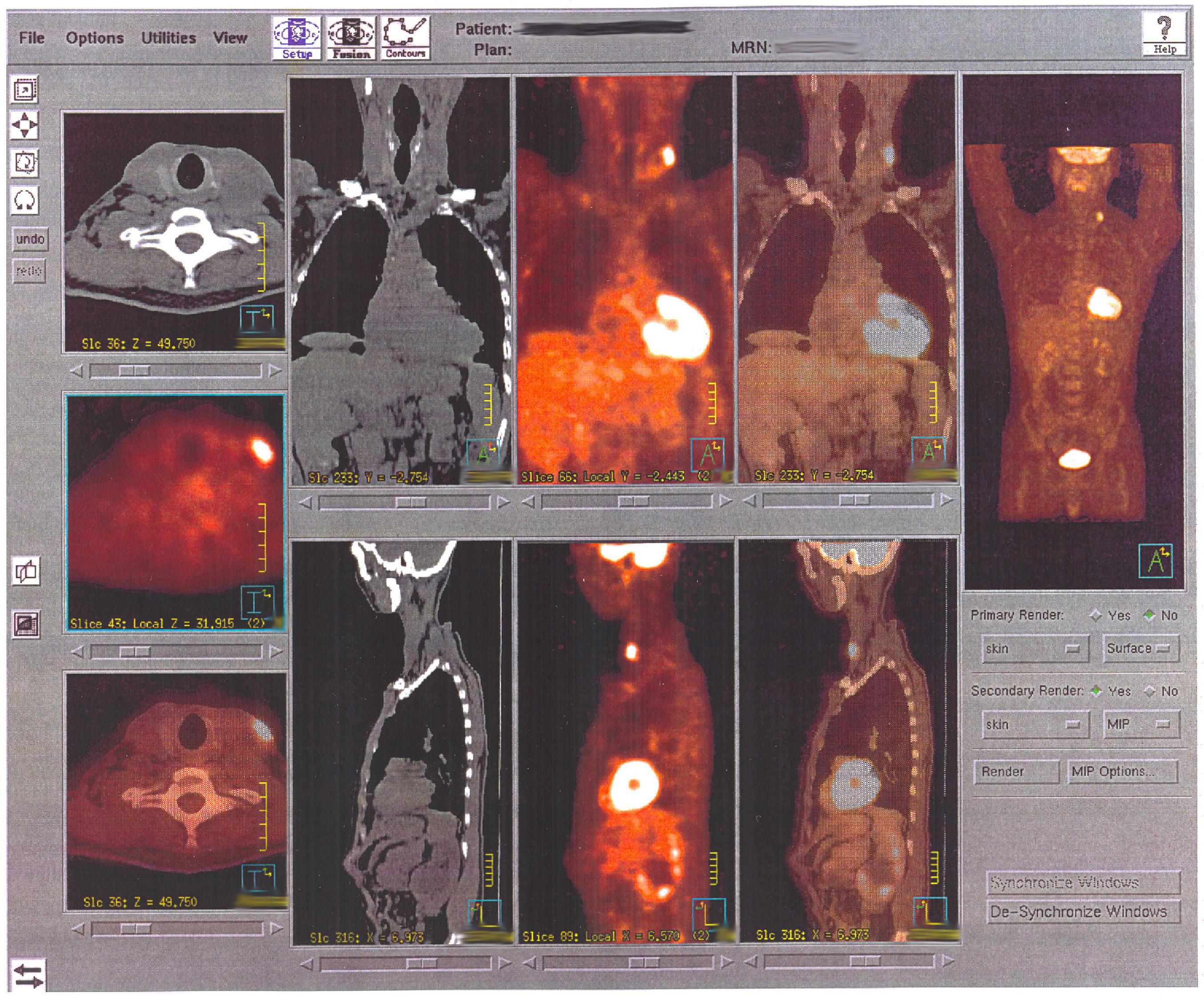| << Chapter < Page | Chapter >> Page > |
Radioisotopes emit subatomic particles that can be detected and tracked by imaging technologies. One of the most advanced uses of radioisotopes in medicine is the positron emission tomography (PET) scanner, which detects the activity in the body of a very small injection of radioactive glucose, the simple sugar that cells use for energy. The PET camera reveals to the medical team which of the patient’s tissues are taking up the most glucose. Thus, the most metabolically active tissues show up as bright “hot spots” on the images ( [link] ). PET can reveal some cancerous masses because cancer cells consume glucose at a high rate to fuel their rapid reproduction.

In the human body, atoms do not exist as independent entities. Rather, they are constantly reacting with other atoms to form and to break down more complex substances. To fully understand anatomy and physiology you must grasp how atoms participate in such reactions. The key is understanding the behavior of electrons.
Although electrons do not follow rigid orbits a set distance away from the atom’s nucleus, they do tend to stay within certain regions of space called electron shells. An electron shell is a layer of electrons that encircle the nucleus at a distinct energy level.
The atoms of the elements found in the human body have from one to five electron shells, and all electron shells hold eight electrons except the first shell, which can only hold two. This configuration of electron shells is the same for all atoms. The precise number of shells depends on the number of electrons in the atom. Hydrogen and helium have just one and two electrons, respectively. If you take a look at the periodic table of the elements, you will notice that hydrogen and helium are placed alone on either sides of the top row; they are the only elements that have just one electron shell ( [link] ). A second shell is necessary to hold the electrons in all elements larger than hydrogen and helium.

Notification Switch
Would you like to follow the 'Anatomy & Physiology' conversation and receive update notifications?